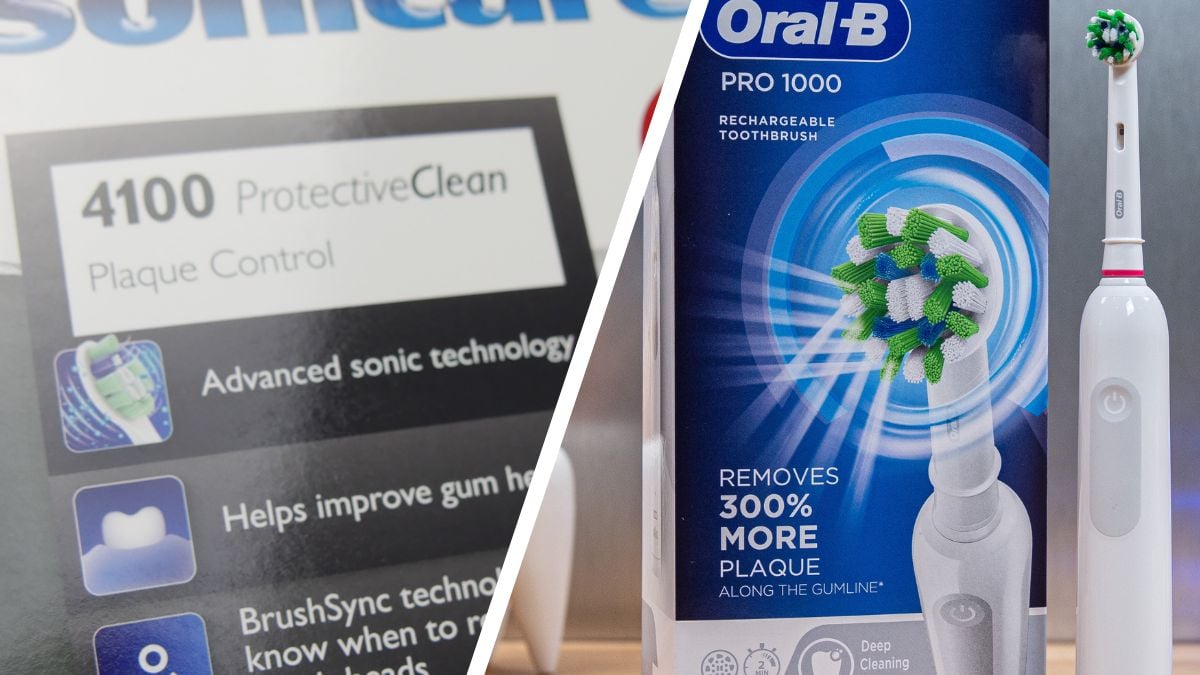
Editor's Note
The ProtectiveClean 4100 is being discontinued. It has been replaced with the 4100 Series.
We have a full review of the 4100 Series available as well as a comparison of the 4100 Series vs the Pro 1000.
Our choice: ProtectiveClean 4100
Make no mistake, both of these are excellent toothbrushes, which will serve you very well, but the 4100 takes the edge because of the pressure sensor, battery life and features for the price.

Key differences
| Find out more |
| Electric Teeth Rating |
| Retail price |
| Approximate 3 year cost |
| Cleaning Action |
| Number of cleaning modes |
| Brushing intensities |
| Timer |
| Pacer |
| Pressure Sensor |
| Battery life |
| Battery type |
| Number of heads included |
| Travel case included |
| Bluetooth connectivity |
| Position tracking |
| Noise |
| Warranty |
| Buying options |
|
Our Choice

|

|
|---|---|
| Review | Review |
|
(4.9)
|
(4.5)
|
| $70 | $50 |
| $160 | $105 |
| Sonic | Oscillating-rotating & pulsating (3D) |
| 1 | 3 |
| - | - |
|
|
|
| 30 second quadpacer | 30 second quadpacer |
|
|
|
| 14 days | 10 days |
| Rechargeable Lithium-Ion (Li-Ion) | Rechargeable Nickel Metal Hydride (NiMH) |
| 1 | 1 |
| - | - |
| - | - |
| - | - |
| 52dB | 73dB |
| 2 years | 2 years |
- Cleaning/brushing action
- The 4100 has a sonic (sweeping) cleaning action compared to the oscillating-rotating and pulsating of the Oral-B Pro 1000.
- Handle design/colors
- The Pro 1000 has a dimpleted texture on the back of the handle that the Sonicare does not have.
- The Pro 1000 is available in 4 colors (white, black, green & pink) compared to the 2 colors (black & white and white & mint) of the ProtectiveClean 4100.
- Brush heads
- The shape and size of the brush heads are different. The Sonicare head is larger.
- Pressure sensor
- The 4100's vibration pattern when the pressure sensor is activated is more noticeable.
- Battery
- The 4100 has a battery life of at least 14 days compared to the 10 of the Pro 1000.
- Other features & technologies
- The 4100's brush head is tracked by the brush handle to alert you when it is time to replace it.
- The 4100 automatically turns off at the end of a cleaning cycle.
- The 4100 is quieter than the Oral-B Pro 1000.
- The 4100 has an ‘EasyStart’ feature.
- Accessories & box contents
- The charging stand supplied with the 4100 supports global voltages, the Oral-B does not.
- Price
- The Pro 1000 is cheaper to own.
Please note. Every effort is made to ensure the key differences listed are correct, but these differences are subject to change without notice. Products and the box contents can be changed without notice and different variants can exist.
Detailed comparison: what’s the difference between the Oral-B Pro 1000 and Sonicare 4100 ProtectiveClean?
The 2 models being compared here today are what I would consider as lower mid-range brushes.
This might not sound all that impressive, but the reality is, both of these are excellent toothbrushes that deliver what you need.
Importantly they offer what you need at a fair price.
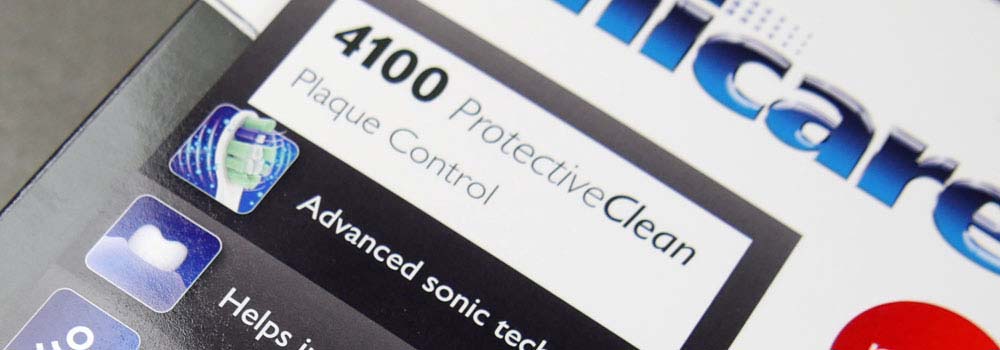
That said, the 4100 does offer a few extra features out of the box which lend themselves to it offering the better overall user experience .
So, let me explain the differences between these 2 electric toothbrushes in a little more detail.
The first and perhaps most significant difference is the cleaning action of the toothbrushes.
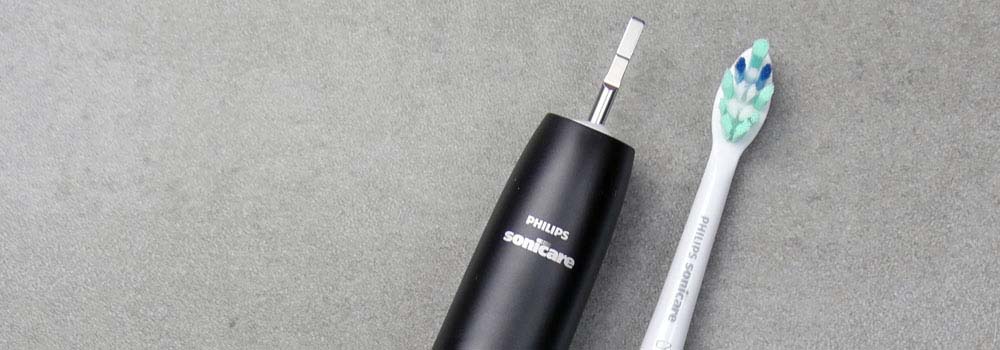
The Sonicare ProtectiveClean offers a sonic cleaning action, which means the bristles move from side to side in a sweeping motion.
Compare this to the oscillating-rotating and pulsating action of the Oral-B.
The Pro 1000's head does move side to side, but the circular shape means the cleaning action is rounded. Oral-B also adds in an extra cleaning dimension known as pulsations which are essentially vibrations to aid in the cleaning process.
I explain this difference in more detail in a separate article, Oral-B vs Sonicare, if you are keen to learn more.
Different they are, but both are proven in clinical trials to be effective and have the backing of leading dental professionals and organizations around the world. In fact, both of these toothbrushes have achieved the American Dental Association seal of acceptance.

For lack of a better analogy, it is like choosing between a General Electric or Whirlpool washing machine. Both do the same job but the way the products are implemented and deliver the results are slightly different.
Having a bigger impact on the cleaning results than the cleaning action is your total brushing time, brushing frequency and technique.
As a consequence of the different cleaning actions, the brush heads supplied with each toothbrush are slightly different too.
The Oral-B Pro 1000 has a small round brush head, whilst the Sonicare has a slightly larger oval/rounded rectangle shaped brush head.
The small round brush head is generally a little easier to position in the mouth, particularly for those who have smaller mouths with crowded teeth.
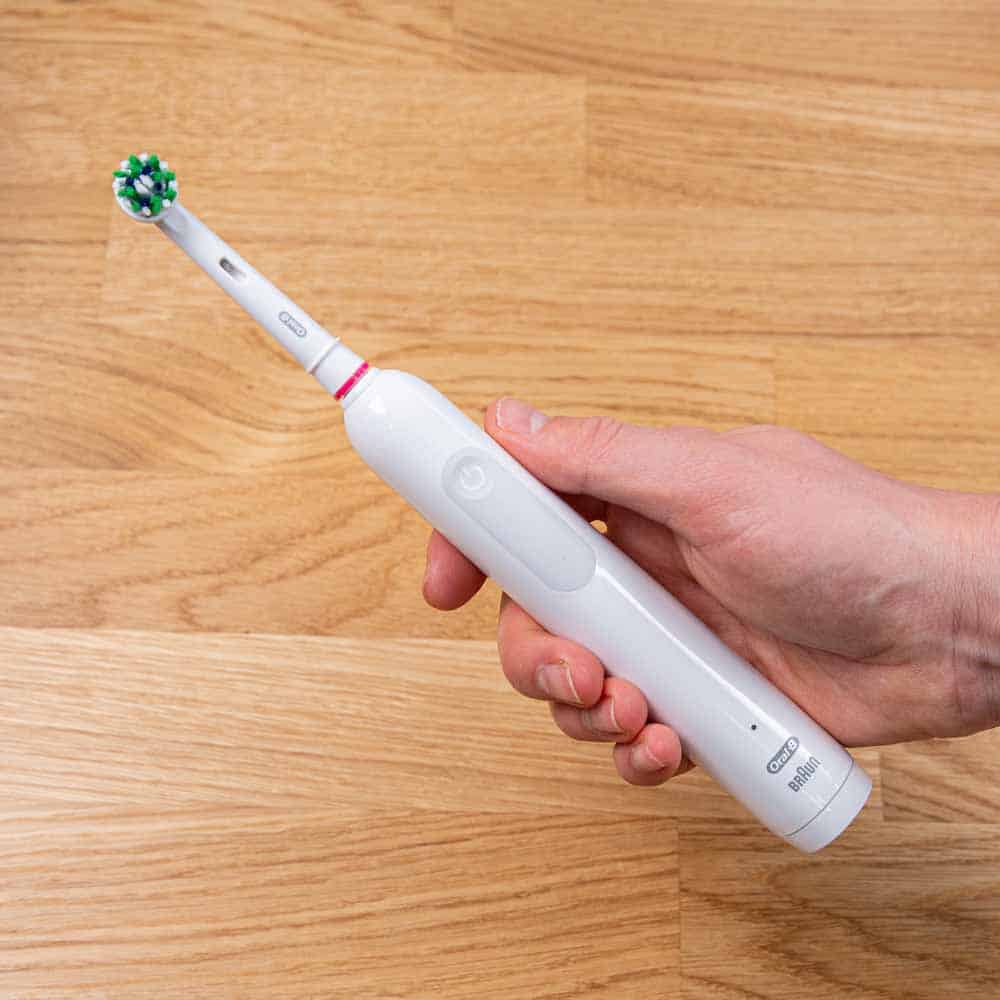
An Oral-B head tends to clean a single tooth surface at a time, whereas the larger Sonicare brush head tends to cover 2-3 teeth at the same time.
For most people, this is not a deal breaker, but may well be something to be considered.
The 4100 comes with a C2 Optimal Plaque Control brush head compared to the CrossAction brush head on the Oral-B Pro 1000. Both clean the teeth well, but clearly noticeable is the fact many of the bristles on the CrossAction brush head are angled.
This angling of the bristles is to help achieve the best clean of the teeth and gums.
Both brands offer a range of different brush heads that have different bristle configurations and styles to achieve different cleaning results. These heads are interchangeable with the handle, so you don’t need to stick with the style of brush head that came supplied in the box.
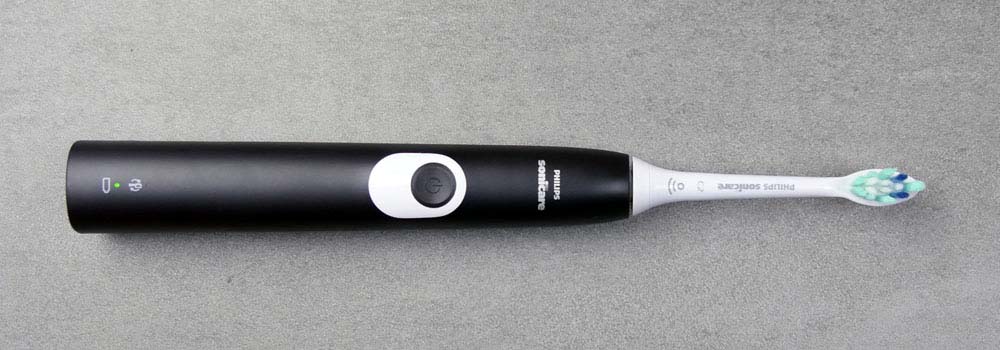
Both the Sonicare 4100 and the Oral-B 1000 have a fairly typical electric toothbrush look to them. The handles are rounded cylinders with the brush head fitting onto a metal shaft that extends from the motor sealed inside the handle.
They are too very similar in physical size and weight with only very small differences in the physical size of the handle.
Both of plastic construction, the Sonicare 4100 is available in 2 color options, black & white and white & mint. In these instances the main handle color is black or white and the color accent is white or mint. This accent it around the power button.
The Pro 1000 on the other hand is available in 4 color options, white, black, green and pink.
Although the brushes are this color, even the black, green and pink still have a white colored base to them.
Both look minimal and clean looking. The 4100 takes the edge in design in my opinion. The colors are slightly more muted thanks to the matte finish to the handle rather than the glossier finish of the Pro 1000.
Neither are particularly slippery in hand, but favoring the Pro 1000 slightly is the dimpled textured surface that runs the whole length of the back of the brush handle. It gives that extra something for the fingers to grab onto.
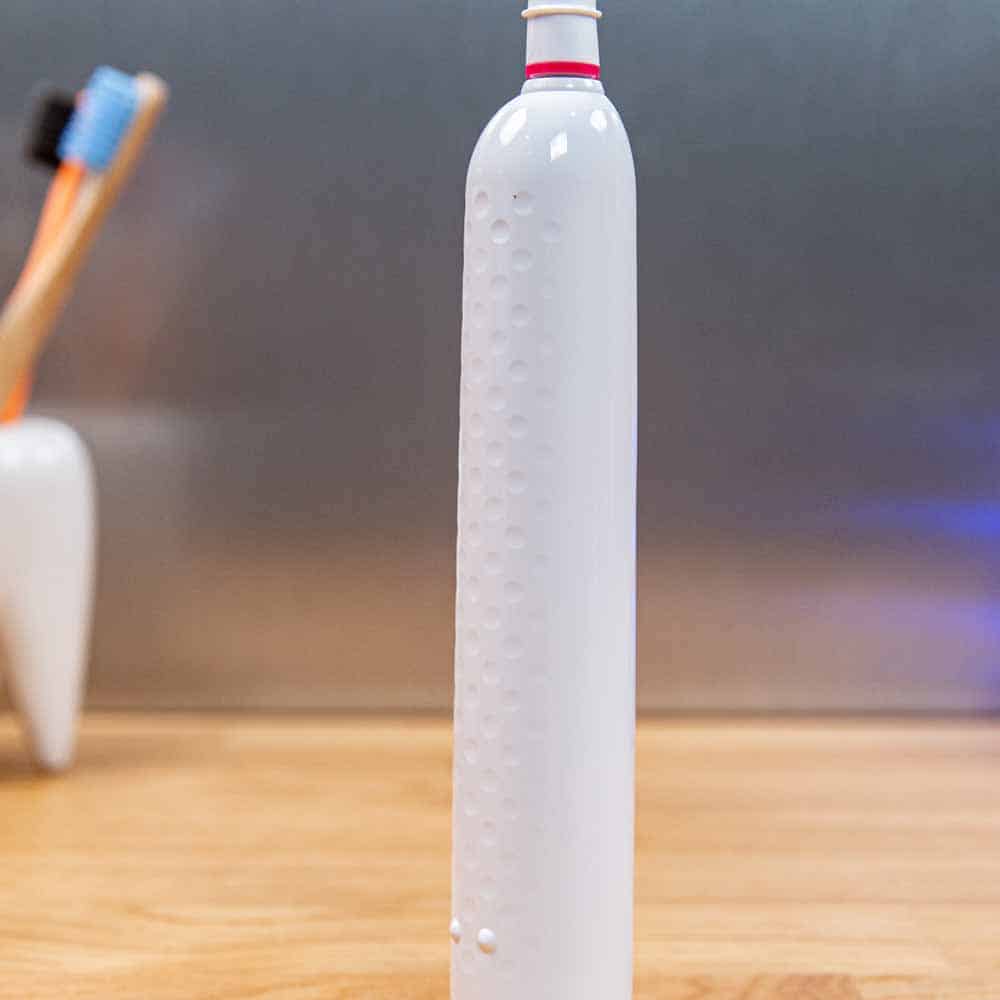
Both the 1000 and 4100 have rubber gripped power buttons, but there is a larger rubber panel around the 1000's power button that you don't get on the 4100.
Both brushes have a similarly placed power button and battery status icon on the handle.
A single press of the power button will turn on either of these toothbrushes, with both offering a single cleaning mode, which is perfectly satisfactory.
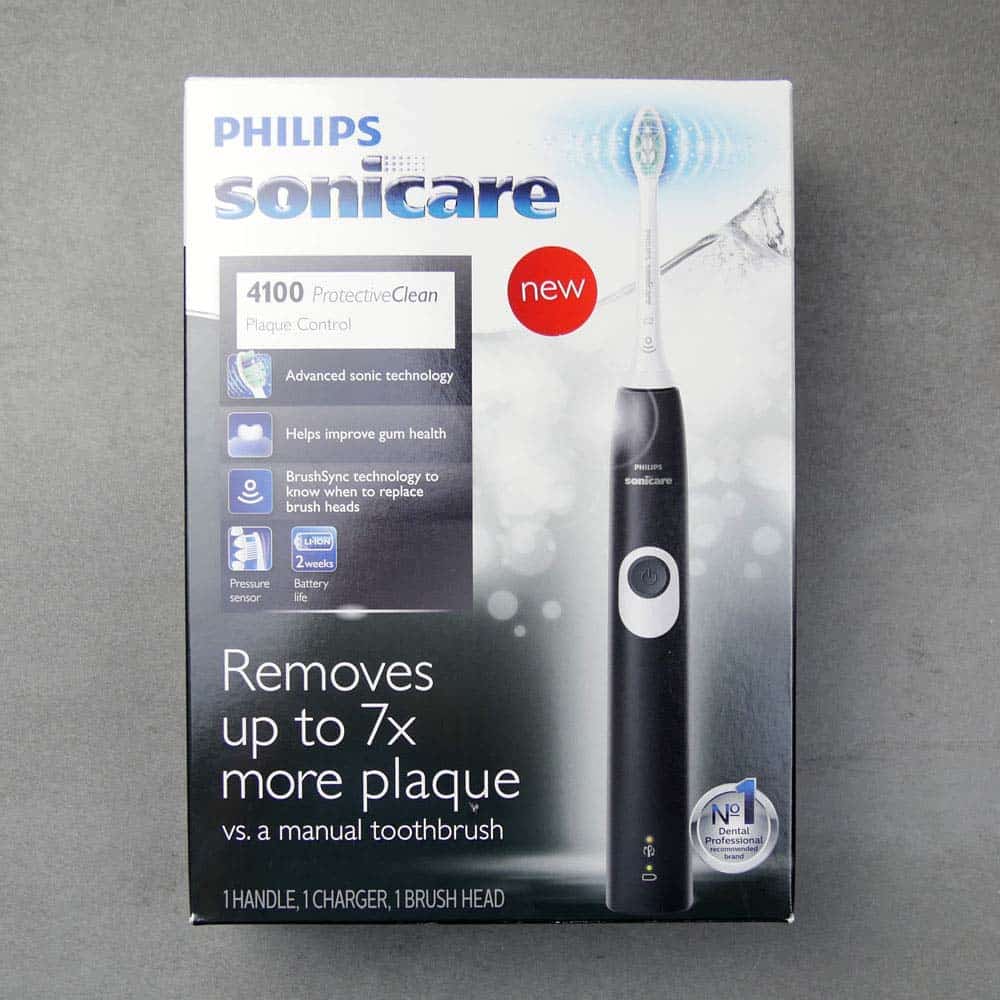
As the brushes are turned on, it will activate the timer and pacer that helps you brush the teeth evenly and for the recommended 2 minutes. Both the 4100 and 1000 have this useful timer feature.
However, at the end of a 2 minute cleaning cycle, the Pro 1000 continues to operate until you physically press the power button to turn it off. The Sonicare, on the other hand, turns itself off automatically.
If you want to brush for longer with the Sonicare, you will have to turn the toothbrush on again, but the power off feature is a nice convenience for most and makes it very clear that the 2 minute cleaning cycle is complete.
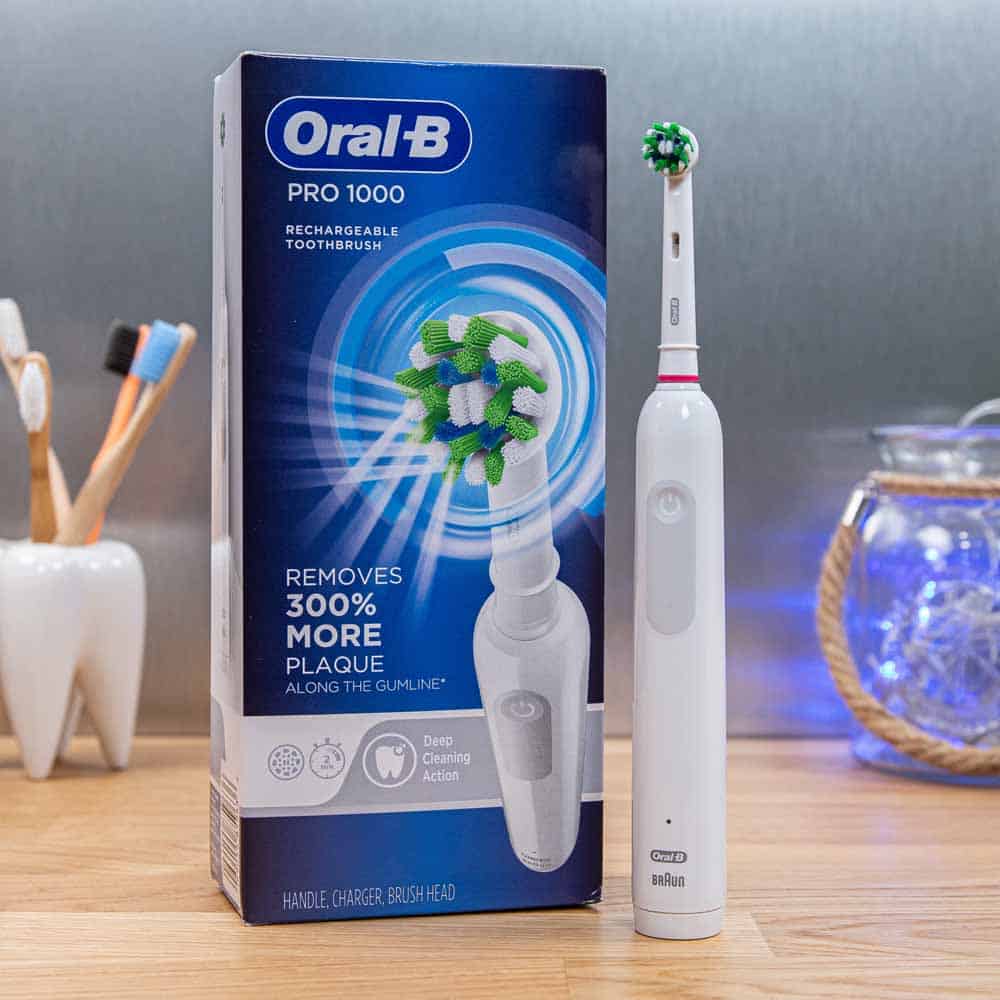
Another of the differences between these 2 toothbrushes is the noise they make when in use. The Sonicare is the quieter of the 2. The Pro 1000 from Oral-B produces a much louder, mechanical sound compared to the quieter vibration/humming sound of the Sonicare. For those who want a more technical answer, the Oral-B comes in at around 76 decibels compared to the 58 of the Sonicare when in use.
A common issue with oral health is that some people brush their teeth with too much force. Brushing with too much pressure can cause unnecessary damage to the teeth and gums. A pressure sensor can help reduce the chances of this damage occurring.
Both models have a pressure sensor built-in. If the toothbrush detects excessive pressure, it will slow down the motion of the brush head until such time as the pressure is relieved.
But, the way in which the brushes alert you is different.
The 4100 places a vibration pattern through the handle. It is quite obvious to detect and is your alert to the fact you are brushing too hard. It does too flash the brush head replacement light, but it is tricky to spot this.
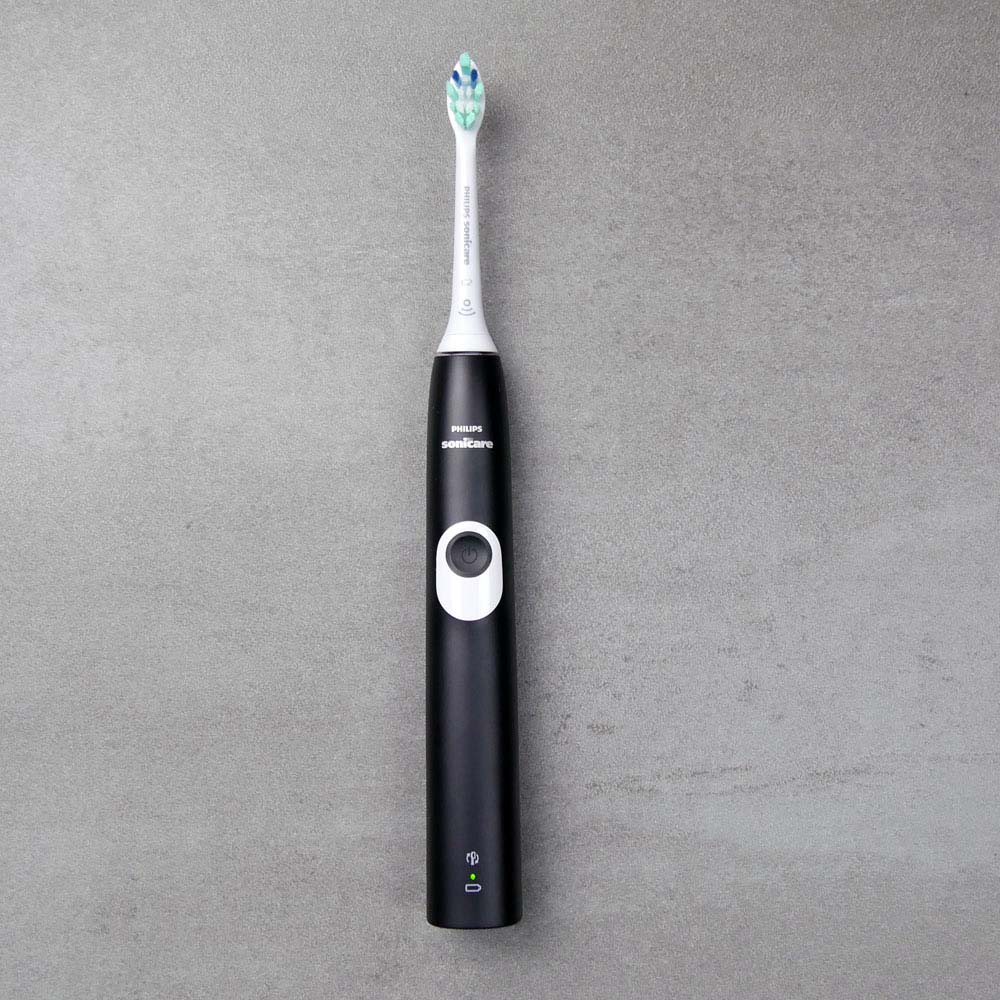
The 1000 on the other hand has no vibration alert like this. You may detect the slight change in brushing sensation and you may even detect the sound changing as the motor works harder under pressure. But, you do have to be quite alert to detect this.
In short, the 4100 is much more effective here.
Yet another feature that the 4100 has, is what is known as an EasyStart mode.
This is designed for first time electric toothbrush users. Over 14 brushing sessions, the power of the toothbrush is gradually increased, meaning you don’t get the full power of the toothbrush the first time that you use it.
Transitioning to an electric toothbrush from a manual one can be daunting for some and the increased number of bristle movements can be offputting and the cleaning action can feel too intense. This EasyStart mode gradually increases the power to help you and me get used to the experience of using a powerful electric toothbrush.
I have already mentioned brush heads, but this Sonicare toothbrush has another feature that is connected to its brush heads which is quite impressive too.
The toothbrush handle will alert you, via an amber/orange LED when it is time to replace your brush head.
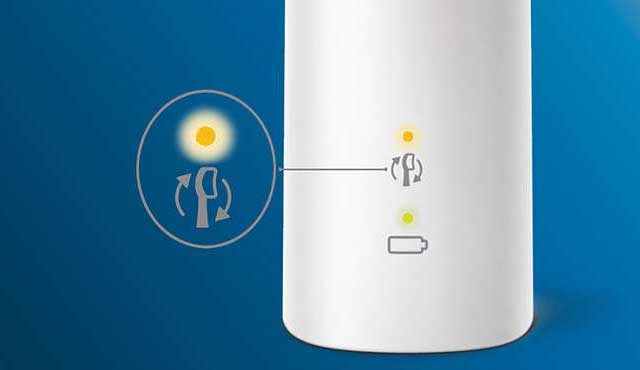
On average, you should replace your brush head every 3 months, but statistics tell us that 42% of people don’t replace their brush head this often.
The 4100’s brush head reminder system gives you the prompt to change just when you need it.
Check out our article on BrushSync technology for a detailed explanation of how it works, but it is all centered around an RFID chip that is built into the toothbrush head, that is tracked to alert you at the right time.
Unfortunately, these brush heads are a little more expensive because of this technology, but it is very useful if you know you often forget to replace your brush head.
Getting towards the end of the differences now. One of the last major differences is the battery in the brush handle.
The 4100 has a Lithium-Ion (Li-Ion) battery, whilst the 1000 has a Nickel Metal Hydride (NiMH) battery. I won’t go into the technical differences, but both are rechargeable, but the Pro 1000 only offers 10 days’ life on a full charge compared to the 14 days of the Sonicare 4100.
But, whilst you may squeeze a couple of extra brushing sessions from the Pro 1000, the Sonicare 4100 goes well beyond the advertised 2 weeks in our hands-on testing. In fact, it lasted 5 weeks on a single charge, which is quite simply amazing.
Simply put there is no competition here when it comes to battery life.
Aligned with this is the charging stand with the toothbrush as well. Both come with a charging stand that the brush sits on and both have a 2 pin power plug, hardwired into the stand. But, the Sonicare charging stands supports 100-240v compared to the 110-130v of the Oral-B.
What this means, is that if you travel internationally with Oral-B you would need a voltage and plug adapter compared to only needing a plug adapter with the Sonicare. It is a small but subtle difference that might apply to you.
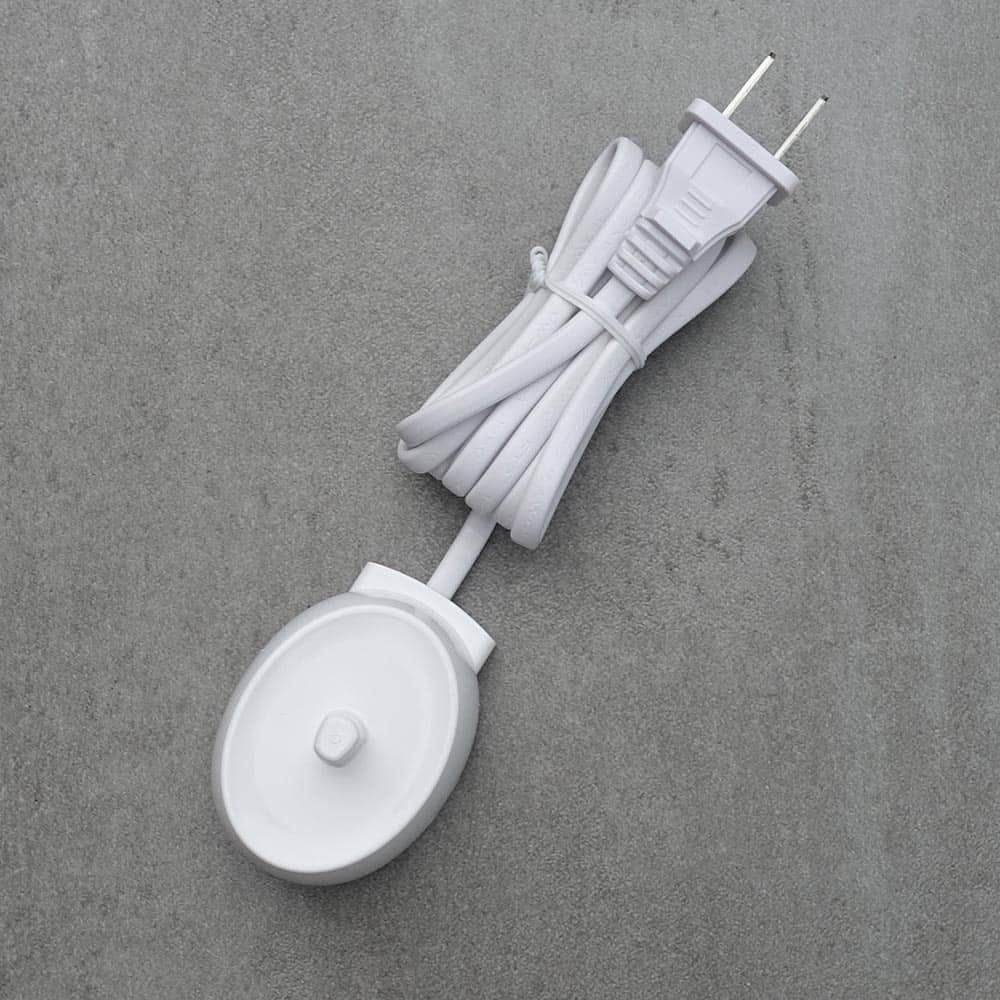
Does one clean better than the other?
It depends on who you ask!
If you asked the respective brands directly, they would each suggest their model does.
Studies have shown that the rotating-oscillating technology, as used by Oral-B generally speaking, has the edge here.
This is because the smaller brush head size and the motion it has resulted in greater improvements of users oral health than a Sonicare model.
This is however under clinical study conditions and there is an acknowledgment that more research is needed.
Simply put, in real-world use, both offer an excellent clean providing they are used correctly.
Honestly, I personally prefer the Oral-B cleaning action, but do happily use Sonicare toothbrushes too.
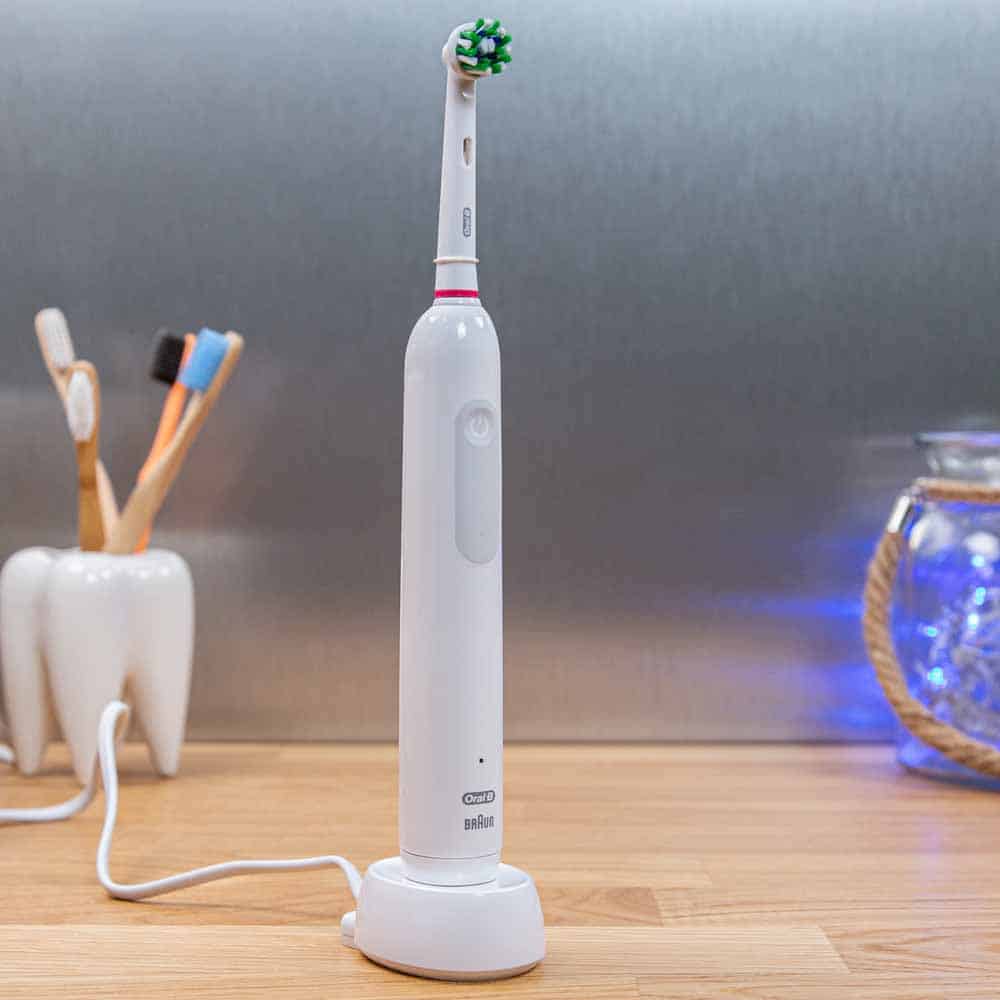
Why I feel this way is because I tend to come away with my teeth feeling cleaner after use. This is likely more a psychological (mental) feeling than reality. The cleaning action or Oral-B is a bit more of an aggressive clean or so it feels, but the Sonicare is by no means bad. In fact, one of the appeals of Sonicare is how gentle it is. It feels softer on the teeth and gums, but it still clinically proven as being effective.
If one of these is to be your first electric toothbrush, either will offer significant benefits compared to a manual brush.
Is one better priced than the other?
Both brushes are very similarly priced. The 4100 has a retail price of $69.99, whilst the Pro 1000 has a $50 retail price.
However, over a 3 year period, the Sonicare 4100 works out to be more expensive than the Pro 1000 because of the cost of replacement brush heads.
Whilst prices are always subject to change and vary from one seller to another, you can generally buy both these brushes for $50.
In fact, on occasions either brush can cost as little as $40.
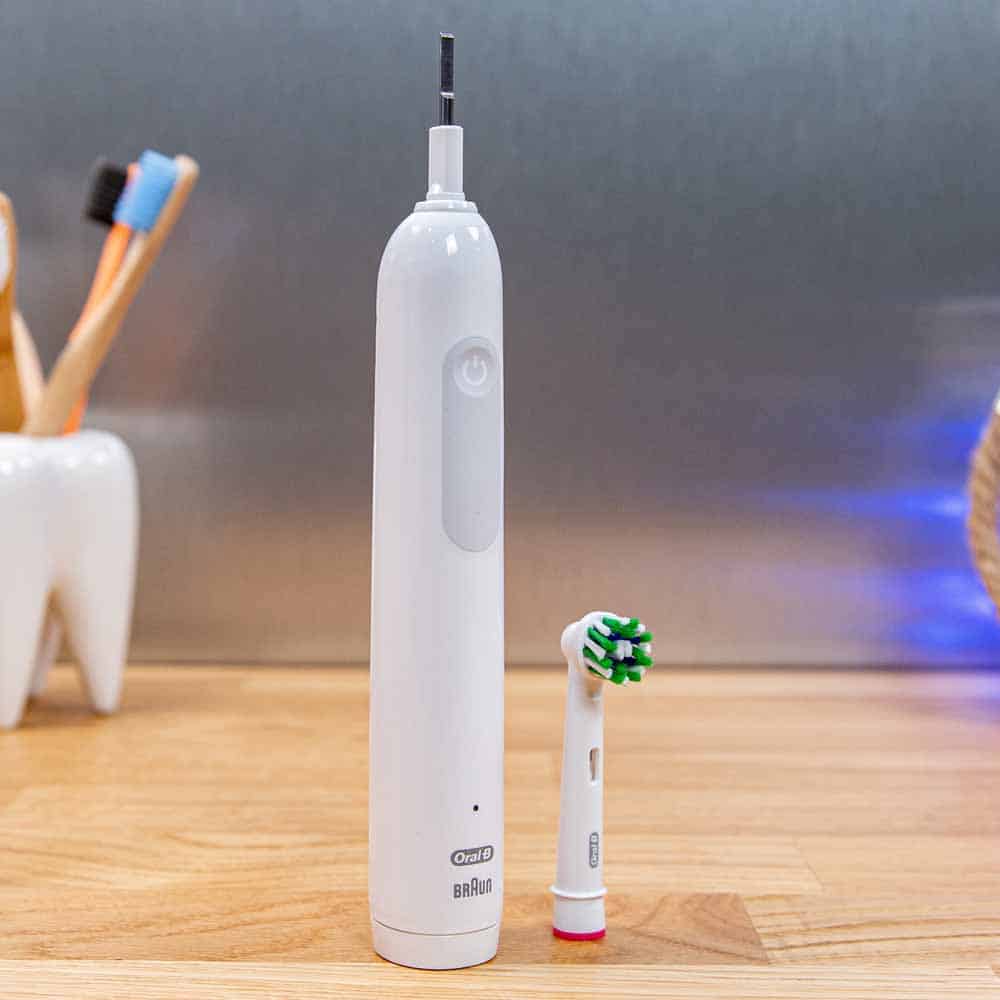
So, there is little to separate them in terms of price at the initial point of purchase.
But, as both of these brushes come with just 1 brush head in the box, you will need to buy replacements fairly soon.
A typical Oral-B brush head is priced at around $5 each whereas a Sonicare head is at least $8 each, if not more.
Sonicare heads have typically always been more expensive than Oral-B, but in this instance, the RFID chip built into these heads increases the price too.
Sonicare does offer heads without the RFID chip. These are cheaper and are compatible with the 4100, but you won’t get the brush head replacement reminder.
When pricing both brushes over a 3 year period, the cost of ownership works out at around $105 for the Oral-B and $138 for the 4100.
Please note that all prices quoted are approximates and will vary based on location, supplier and time of purchase. These figures were correct at the time of writing and should not be relied upon as hard fact, but used as a guide during your decision process.
Conclusion
These are 2 excellent toothbrushes that I could use happily on a daily basis.
The 4100 does offer a few more desirable features and feels the more premium brush in hand. The pressure sensor and the brush head reminder are particularly appealing, as is the extra battery life.
These extras do come at a slight price premium, but it is one that I think most would agree is worthwhile as you get a toothbrush, which I at least feel is more enjoyable to use on a daily basis.


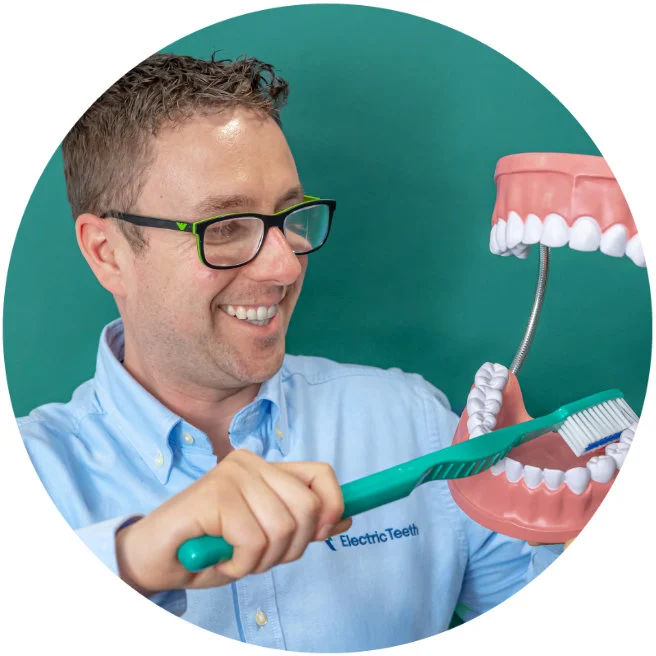
Excellent article. Trying to decide which electric toothbrush to choose. Which one is superior for removing plaque? My dentist cleans my teeth every 4 months, yet have a lot of plaque. I brush with a hand brush at least 3 times daily. I like a firm brush, but told it isn't good to use.
Thanks for the feedback.
Beatrice. The data would suggest Oral-B (thus the Pro 1000) will remove more plaque.
Softer bristles are better than firmer ones.